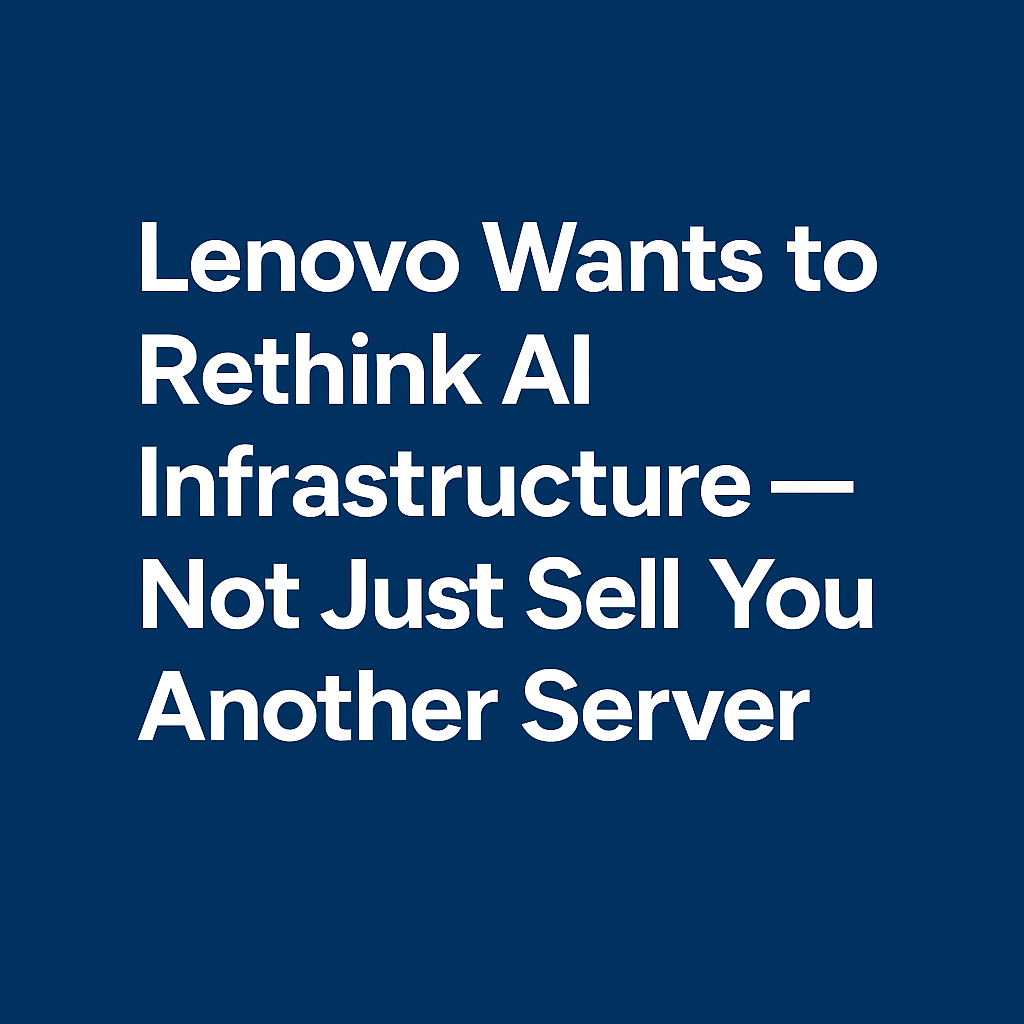Lenovo Wants to Rethink AI Infrastructure — Not Just Sell You Another Server
Let’s face it — most “AI servers” on the market today are just GPU-packed machines hoping you’ll figure out the rest. Lenovo’s latest launch tries something different: build hardware that actually considers the realities of enterprise AI.
Their new flagship, the ThinkSystem SR685a V3, isn’t subtle. It’s a 5U server designed to handle up to 8 NVIDIA H100s, paired with AMD’s 4th Gen EPYC CPUs. Translation: this thing is built for serious parallel workloads, where airflow, power draw, and bandwidth become bottlenecks real fast.
But Lenovo’s bigger message? Think beyond the node. Think rack-scale.
Not Just a Chassis — A Whole Platform
This isn’t about selling a spec sheet. Lenovo is clearly pushing toward integrated deployment models. The SR685a V3 pairs with their Neptune liquid cooling tech, offers compatibility with NVIDIA’s enterprise AI suite, and plugs into OpenShift or Red Hat environments without drama.
In other words — it’s not a science project. It’s meant to be dropped into production without a year of custom integration work.
Need less muscle? There’s also the SR675a V3 — same design principles, but in a 3U form factor and with support for 4 GPUs instead of 8. Ideal for space-constrained sites or edge deployments that still need real GPU throughput.
Why This Release Actually Matters
Here’s the thing: most AI projects don’t fail because of bad models. They fail because the infrastructure doesn’t scale. Thermal limits, misaligned data flow, power issues — all of that can sink a GPU cluster faster than poor code.
What Lenovo is doing here is leaning into the idea that AI infrastructure is its own class of workload. And if your servers, racks, and cooling aren’t designed with that in mind, you’re probably leaving performance (and budget) on the table.
They’re not the only ones in this space — but they’re clearly aiming at the gap between DIY builds and hyperscaler-level custom rigs.
Bottom Line?
If you’re planning serious on-prem AI and want systems that consider everything from PCIe layout to cooling loops, this new generation from Lenovo is worth watching.
Not revolutionary. But refreshingly well thought out.

